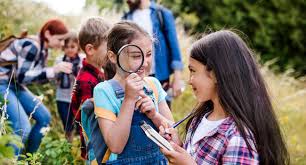Murals have long been a powerful medium for storytelling and community expression. The art of the mural maker goes beyond mere decoration; it serves as a voice for the community, reflecting its history, culture, and aspirations. In this article, we will explore the multifaceted role of mural makers, their creative processes, and the impact of their work on communities. We will uncover how murals foster identity, provoke thought, and bring people together by examining various case studies and artistic movements.
The History of Muralism
1.1 Ancient Roots
The practice of mural painting can be traced back to ancient civilizations, such as the Egyptians, who adorned the walls of their tombs with intricate depictions of daily life and the afterlife. These murals served as decorative elements and spiritual narratives intended to guide the deceased in the afterlife.
1.2 The Renaissance and Beyond
During the Renaissance, muralism evolved as artists like Michelangelo and Raphael transformed the ceilings of cathedrals and palaces into breathtaking visual narratives. Their work elevated mural painting to an esteemed art form, often commissioned by the church or wealthy patrons. This tradition continued into the 19th and 20th centuries, with movements like the Mexican Mural Movement, led by artists like Diego Rivera, who used murals to address social issues and promote political activism.
The Mural Maker’s Creative Process
2.1 Inspiration and Concept Development
The journey of a mural maker often begins with deep community engagement. Muralists immerse themselves in the local culture, speaking with residents to understand their stories, dreams, and struggles. Collecting narratives is crucial, allowing artists to create concepts that resonate with the community’s identity.
2.2 Designing the Mural
Once the concept is established, mural makers develop a design that captures the essence of their findings. This stage often involves sketching preliminary ideas, considering color palettes, and selecting appropriate themes that reflect the community’s values. Collaboration with local stakeholders is vital, ensuring that the final design embodies the community’s collective voice.
2.3 The Physical Creation
The actual painting process is both exhilarating and challenging. Mural makers must consider various factors, such as weather conditions, wall textures, and the scale of their designs. Scaffolding or lifts are often necessary for more enormous murals, adding a physical challenge to the artistic endeavor.
Murals as Community Narratives
3.1 Representation and Identity
Murals serve as powerful symbols of community identity. They can celebrate cultural heritage, honor local heroes, or address social issues. For instance, the “Wall of Respect” in Chicago, created in 1967, symbolized the Black Arts Movement, celebrating African American culture and history.
3.2 Social Commentary and Activism
Many muralists use their art as a platform for social change. For example, the “Río de la Vida” mural in San Diego portrays the struggles and triumphs of the Latino community, addressing issues such as immigration and identity. Through vivid imagery and poignant narratives, murals like this foster dialogue around pressing social issues.
3.3 Building Community Connections
Murals often serve as gathering points for communities. They create spaces for conversation, celebration, and collaboration. Events such as mural unveilings or community paint days invite residents to participate in the creative process, strengthening bonds and fostering a sense of ownership over public spaces.
Case Studies of Impactful Murals
4.1 The Philadelphia Mural Arts Program
Founded in 1984, the Philadelphia Mural Arts Program has transformed the city into an outdoor gallery. With over 4,000 murals, the program emphasizes community engagement and artistic collaboration. One notable project is the “Your Day, Your Way” mural, which represents the diversity of the city’s neighborhoods. This initiative has not only beautified the urban landscape but has also become a catalyst for community pride and activism.
4.2 The “Love” Mural by Robert Indiana
Robert Indiana’s iconic “LOVE” mural in Philadelphia symbolizes peace and love worldwide. Created as part of a Christmas card design, the mural has become a tourist attraction and inspiration for countless artists. Its simple yet powerful message demonstrates the capacity of murals to transcend cultural boundaries.
4.3 The “Maestra Vida” Mural in San Francisco
The “Maestra Vida” mural in San Francisco pays tribute to the contributions of women in the labor movement, particularly in the agricultural sector. This mural honors historical figures and educates the community about their struggles and achievements. Such narratives foster awareness and appreciation for the sacrifices made by previous generations, ensuring that their stories are not forgotten(
The Future of Muralism
5.1 Technological Advancements
The rise of digital technology has opened new avenues for mural makers. Artists now use digital tools to design and project their murals before painting, allowing for precise planning and execution. Furthermore, augmented reality (AR) technology enables viewers to engage with murals innovatively, enhancing the storytelling experience.
5.2 Sustainability in Mural Making
As communities become more environmentally conscious, mural makers are adopting sustainable practices. This includes using eco-friendly paints, incorporating living walls, and designing murals that promote environmental awareness. These initiatives beautify urban spaces and encourage sustainable practices within the community.
5.3 Expanding Community Engagement
The future of muralism will likely see an even greater emphasis on community involvement. Collaborative projects that invite residents to contribute their ideas and artistry will continue to foster a sense of belonging and ownership. This participatory approach will ensure that murals remain relevant and reflect the community’s evolving narrative.
Conclusion
The art of the mural maker is a powerful expression transcending mere decoration. It encapsulates the voices of communities, addresses social issues, and celebrates cultural identity. As we look to the future, it is essential to recognize the role of mural makers in shaping our urban landscapes and fostering connections among diverse populations. By engaging with communities and crafting vibrant narratives, mural makers beautify spaces and contribute to the rich tapestry of our shared human experience.




